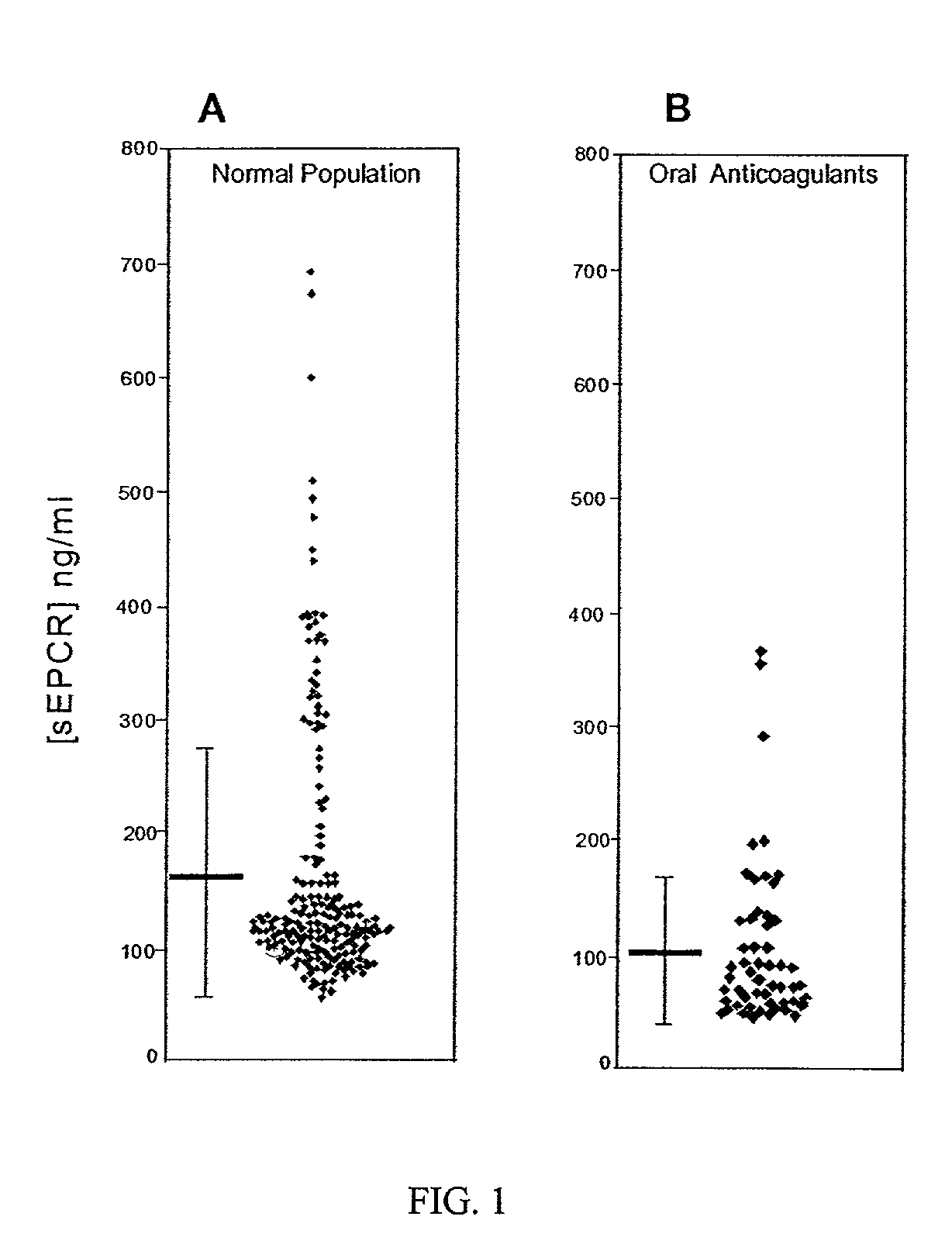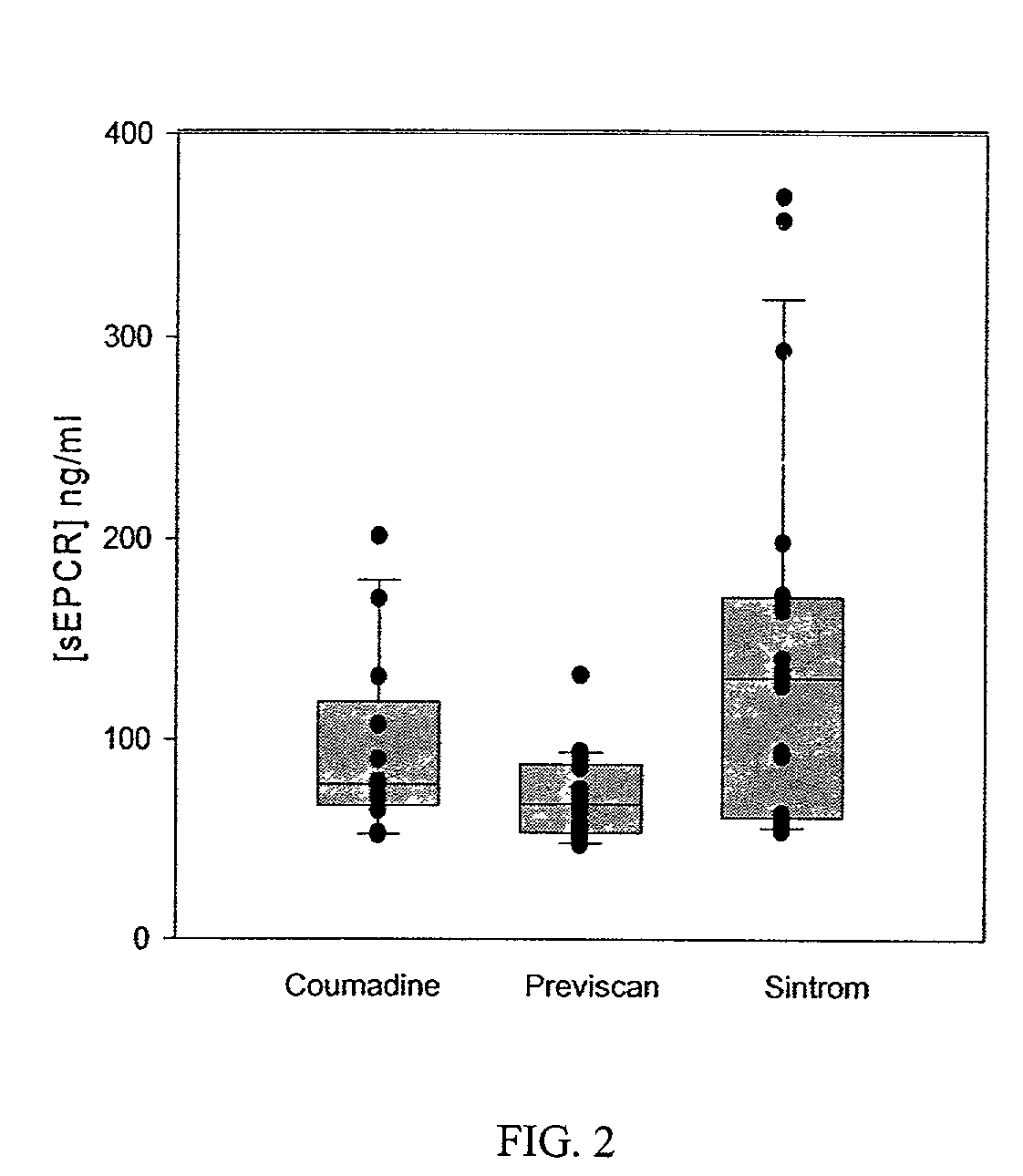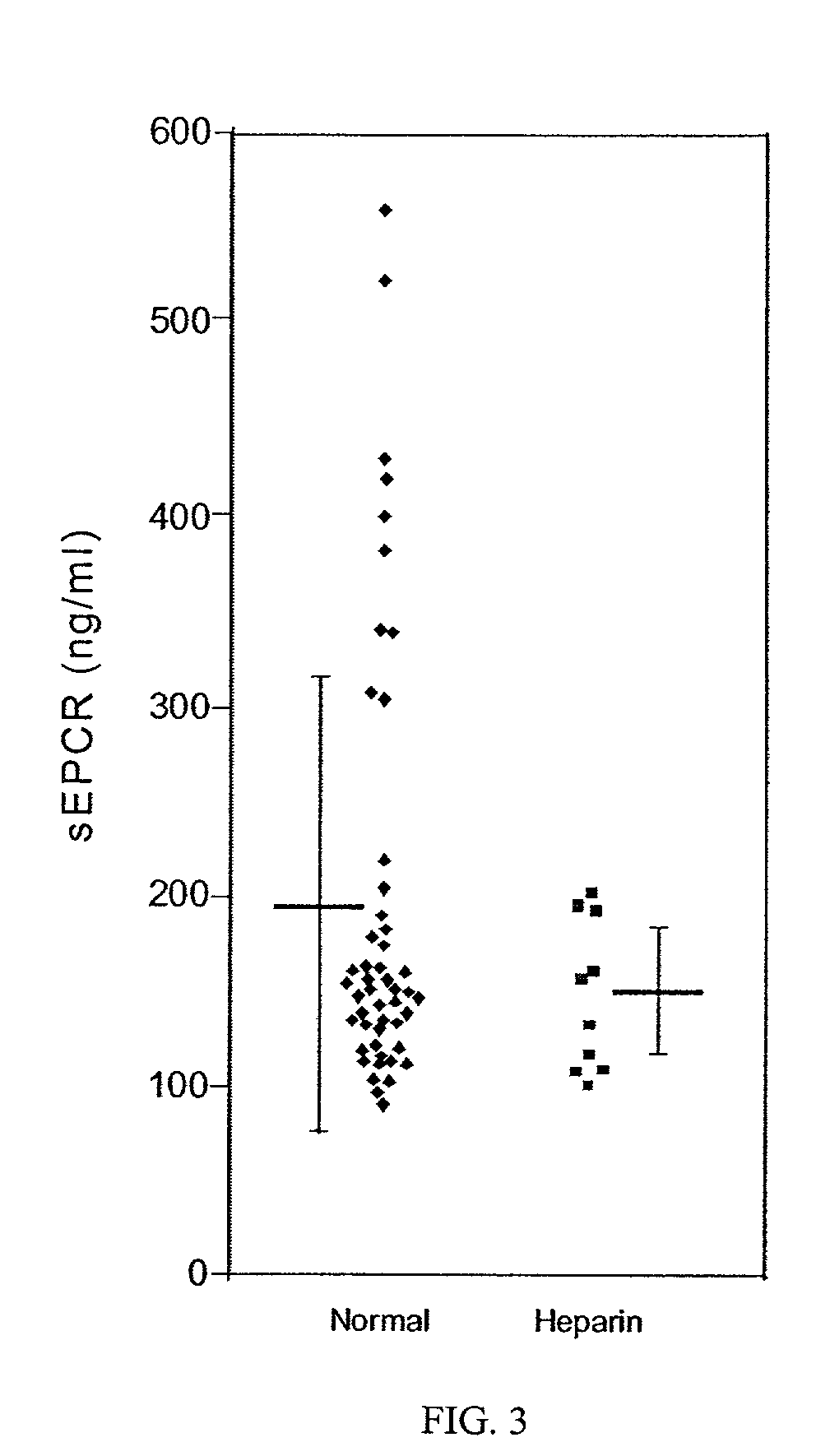Method for monitoring coagulability and hypercoagulable states
a coagulability and hypercoagulable state technology, applied in the field of vascular biology and inflammation, can solve the problems of unbalanced hemostatic control, significant morbidity and mortality, and warfarin is a potentially hazardous drug, and achieve the effect of increasing the risk of hypercoagulability
- Summary
- Abstract
- Description
- Claims
- Application Information
AI Technical Summary
Benefits of technology
Problems solved by technology
Method used
Image
Examples
example 1
Results
[0085]Soluble EPCR is generated in vitro by metalloproteinase activity induced by thrombin and some inflammatory mediators (Xu et al., 2000). Thus, the inventors chose to determine whether soluble EPCR levels reflected in vivo thrombin generation. To evaluate this, the soluble EPCR levels were determined in patients on oral anticoagulant therapy and compared with soluble EPCR levels found in a normal, apparently healthy adult population (FIGS. 1A and 1B). These samples were obtained from collaborators in France (Dr. M. Grimeaux, Serbio / Diagnostica Stago). The soluble EPCR levels are assayed using a monoclonal antibody-based enzyme-linked immunosorbent assay (ELISA) (U.S. Pat. No. 5,804,392, incorporated by reference herein). The normal population (see FIG. 1A) had soluble EPCR levels of 165.8+ / −115.8 ng / ml. The patients on oral anticoagulant therapy (see FIG. 1B) had significantly lower soluble EPCR levels of 105.3+−70.8 ng / ml (p<0.0001; n=55). Within this patient population,...
example 2
Discussion
[0093]The current understanding of soluble EPCR formation is that thrombin induces metalloproteinase activity, which then proteolyses the membrane-bound EPCR parent to release the soluble receptor. The in vitro time frame of this process is hours (Xu et al., 2000). This compares with only minutes for thrombin-antithrombin (TAT) formation in the absence of heparin, which is accelerated approximately 2300-fold in the presence of heparin (Beller et al, 1979). Thus, the time frame involved for monitoring sEPCR formation is much longer than for thrombin itself. The data shown in FIGS. 4A and 4B indicates the sEPCR levels in normal individuals begin to fall within 24–48 hours after initiation of Warfarin and, conversely, begin to rise 24–48 hours after cessation of Warfarin. In some patients this may be longer, as shown by three of the patients in FIG. 5, whose sEPCR levels dropped only after day 3–4 of treatment. It also follows that thrombin generated in vitro during phlebotom...
PUM
| Property | Measurement | Unit |
|---|---|---|
| time | aaaaa | aaaaa |
| temperatures | aaaaa | aaaaa |
| temperatures | aaaaa | aaaaa |
Abstract
Description
Claims
Application Information
 Login to View More
Login to View More - R&D
- Intellectual Property
- Life Sciences
- Materials
- Tech Scout
- Unparalleled Data Quality
- Higher Quality Content
- 60% Fewer Hallucinations
Browse by: Latest US Patents, China's latest patents, Technical Efficacy Thesaurus, Application Domain, Technology Topic, Popular Technical Reports.
© 2025 PatSnap. All rights reserved.Legal|Privacy policy|Modern Slavery Act Transparency Statement|Sitemap|About US| Contact US: help@patsnap.com



